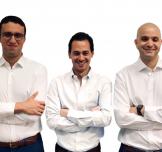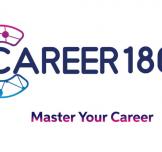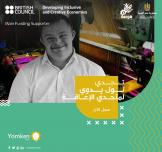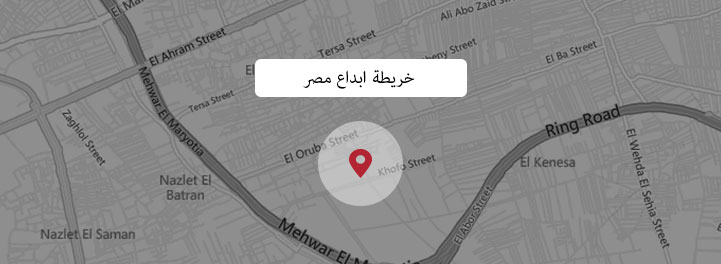أنت هنا
THE INNOVATION ENGINE PODCAST: BREAKTHROUGH INSIGHTS FROM ROWAN GIBSON – PART 9

This is a transcript and audio file from the popular podcast “The Innovation Engine”, hosted by Will Sherlin, featuring an interview with Rowan Gibson, author of “The Four Lenses of Innovation.”
“Welcome to Part 2 of the Innovation Engine podcast with Rowan Gibson, the internationally bestselling author of “The Four Lenses of Innovation” and co-founder of Innovation Excellence.com, the most popular innovation website in the world. I’m Will Sherwin. Welcome back, Rowan.” Thanks, Will.
Previously we discussed some examples that applied the innovation lenses concept and some examples that applied the concept of seeing the future in the present. In this post we will talk more about the 3Rs , Gibson mentioned in his book.
Let me ask you about the 3 Rs. What are the 3 Rs that you write about that innovative companies tend to manage well?
OK, so this is the third lens of innovation – which is called Leveraging Resources in new ways. It’s about taking skills or core competencies, along with strategic assets, and saying “How could we repurpose, redeploy or recombine these things in order to open up new growth opportunities?”
So there are the 3 Rs – Repurpose, Redeploy and Recombine – and this has really been central to the way humans innovate for thousands of years.
Remember the story of Gutenberg’s printing press that we talked about earlier. It was a great example of recombination – leveraging his skills in metal working to make the metal, moveable type, taking the idea of the printing press itself from the wooden wine press that was commonly used in his day, combining that with readily available paper (one of his business partners actually owned a paper mill), and then picking up the idea for printer’s ink from the oil paint created by Jan van Eyck a few years earlier in Holland. So he really connected all that stuff in a very brilliant way, but it’s the principle we need to learn here. How can we apply this principle to build our own opportunities for innovation?
Again, Google is a good modern example. They started out with just a search engine. But if you look at Google today, how would you define the company? It’s not just search – which, by the way, they have stretched into all kinds of new opportunities like images, books, movies etc. – it’s also productivity tools like Gmail, Calendar, Contacts, and so on. It’s advertising tools, cloud computing, the Chrome web-browser and operating system, then Android for mobile devices and now for wearables, it’s Google TV, the Google Play store, you know, all that stuff. And then they stretched into hardware with the Nexus smartphones and tablets, Chromebook laptops, the Chromecast media streaming adapter, Google TV, Google Glass (which I still consider to be revolutionary).
Along the way Google bought Nest Labs, which is taking them into the market for home automation appliances and the Internet of Things, and Waze – the community based traffic and navigation app. They have Google Fiber for high-speed broadband, Google Clean Energy, and even a Shopping Express program that is going up against Amazon. Then we get all the flaky stuff like self-driving cars, airborne wind turbines, artificial intelligence, advanced robotics, high-altitude balloons for broadcasting Internet service to remote or impoverished areas of the world, and this research I mentioned into the biological causes of aging and its associated diseases.
So rather than developing a narrow self-image that pigeonholes the firm in a particular category, Google has been able to stretch the way it defines its business based on its collection of core competencies and strategic assets. I like the way Larry Page put it in an interview last year. He said. “I always thought it was kind of stupid if you have this big company, and you can only do, like, five things.”
So that’s the principle here. And we see this with other innovative firms like Disney, or Amazon, or Richard Branson’s Virgin Group, which started as a record store in London and transformed itself into a global conglomerate with over 400 different companies, like the airline, the mobile phone business, and so on.
"In other words, you’ve got to say. “How do we extend the boundaries of our business?”
You don’t want to get locked into a particular way of looking at your company. Instead, you’ve got to try to imagine ways to stretch beyond your current business into new spaces and domains—either adjacent to your core or perhaps far outside it. And that’s why you need this third lens of innovation. You’ve got to develop an elastic view of your company. Rather than defining it in terms of what it currently is or what it does, you’ve got to try to think of your company in terms of what it knows—its unique set of skills or competencies—and what it owns—its valuable assets.
You’ve also got to look outside your own firm and search for opportunities to combine your organization’s own resources with the competencies and assets of other companies to produce innovative new solutions for customers.




























































موقع إبداع مصر غير مسؤول عن مضمون التعليقات